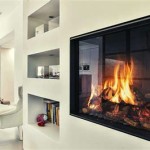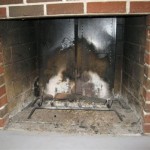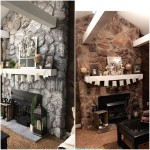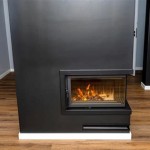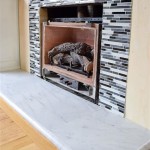The Enduring Appeal of Wood Fireplace Mantels
Fireplace mantels, acting as both functional supports and decorative focal points, have been integral to interior design for centuries. Among the diverse materials available, wood stands out for its inherent warmth, versatility, and timeless aesthetic. A wood fireplace mantel can seamlessly integrate with various architectural styles, from rustic cabins to modern minimalist spaces, adding character and visual interest to any room. The choice of wood itself offers a spectrum of options, each possessing unique grain patterns, colors, and textural qualities that contribute to the mantel's overall appeal.
The selection of a wood fireplace mantel involves consideration of various factors, including the fireplace's dimensions, the room's existing décor, and the desired aesthetic. The mantel's size should be proportional to the fireplace opening and the surrounding wall space. A mantel that is too small might appear insignificant, while one that is too large can overwhelm the area. In terms of style, the mantel should complement the overall design of the room. A sleek, minimalist mantel might be well-suited for a contemporary space, while a more elaborate, carved mantel could enhance a traditional setting.
Beyond aesthetics, the practical aspects of a wood fireplace mantel are equally important. The mantel serves as a shelf for displaying decorative items, such as photographs, artwork, and collectibles. It also provides a surface for seasonal decorations, such as holiday ornaments or floral arrangements. Furthermore, the mantel can act as a protective barrier, preventing heat from damaging the wall above the fireplace. The chosen wood should be durable and resistant to heat, minimizing the risk of warping or cracking over time.
Advantages of Choosing Wood for Fireplace Mantels
Wood's popularity as a mantel material stems from several key advantages. Firstly, wood offers unparalleled versatility. It can be easily shaped, carved, and finished to achieve a wide range of styles, from simple and understated to ornate and elaborate. This adaptability allows homeowners to customize their mantel to perfectly match their personal preferences and the room's design scheme. Different wood species possess unique grain patterns and colors, offering further customization options. For instance, oak is known for its distinctive grain and durability, while maple offers a smoother texture and lighter color. Cherry wood provides a rich, reddish-brown hue that deepens over time, adding warmth and character to the space.
Secondly, wood possesses inherent warmth and character that few other materials can replicate. The natural grain patterns and textures of wood add visual interest and depth to the mantel, creating a focal point that draws the eye. Wood also evokes a sense of comfort and connection to nature, contributing to a welcoming and inviting atmosphere. The warmth of wood can soften the starkness of a modern space or enhance the traditional charm of a more classic setting. When combined with the flickering flames of a fire, a wood fireplace mantel creates a cozy and relaxing ambiance.
Thirdly, wood is a relatively sustainable and renewable material. When sourced from responsibly managed forests, wood can be a environmentally conscious choice for a fireplace mantel. Sustainable forestry practices ensure that forests are harvested and replanted in a way that maintains their long-term health and productivity. Using wood from sustainable sources helps to reduce the environmental impact of deforestation and promotes responsible resource management. Additionally, wood is a biodegradable material, meaning it will naturally decompose at the end of its life cycle, unlike some synthetic materials that can persist in the environment for centuries.
Considerations When Selecting Wood for Fireplace Mantels
Choosing the right type of wood for a fireplace mantel is crucial for both aesthetic appeal and long-term durability. Different wood species possess varying characteristics, including grain pattern, color, hardness, and resistance to heat and moisture. Softwoods, such as pine and fir, are generally less expensive and easier to work with, but they are also more susceptible to damage from heat and moisture. Hardwoods, such as oak, maple, and cherry, are more durable and resistant to warping and cracking, making them a better choice for a fireplace mantel that will be exposed to heat. It is important to research the properties of different wood species before making a decision.
The mantel's proximity to the fireplace opening is a key factor in determining the appropriate wood species. Mantels that are positioned closer to the flames will be exposed to higher temperatures and should be made from a heat-resistant wood, such as oak or maple. These woods are less likely to warp or crack under high heat. Mantels that are positioned further away from the fireplace opening may be suitable for softer woods, such as pine or fir, but they should still be treated with a heat-resistant sealant to protect them from damage.
Moisture content is also a critical consideration. Wood with a high moisture content is more likely to warp, crack, or split as it dries out. Kiln-dried wood, which has been carefully dried to a specific moisture content, is the best choice for a fireplace mantel. Kiln-drying helps to minimize the risk of warping and cracking and ensures that the wood is stable and durable. It is also important to protect the wood from moisture after installation by applying a sealant or finish that will repel water. Proper maintenance and care can extend the lifespan of a wood fireplace mantel and keep it looking its best for many years.
Styles and Finishes for Wood Fireplace Mantels
The style and finish of a wood fireplace mantel can significantly impact the overall look and feel of a room. The style should complement the architectural style of the home and the existing décor. For example, a traditional home might benefit from a mantel with ornate carvings and moldings, while a modern home might be better suited for a sleek, minimalist mantel with clean lines. The finish should also be carefully considered. A natural finish can highlight the wood's inherent beauty and grain patterns, while a painted finish can add color and visual interest to the space. Various finishing techniques, such as staining, glazing, and distressing, can create different effects and textures.
Traditional mantel styles often feature elaborate carvings, moldings, and embellishments. These mantels are typically made from hardwoods, such as oak or cherry, and are finished with a rich stain or varnish. Traditional mantels can be further enhanced with decorative elements, such as corbels, keystones, and dentil moldings. The intricate details and craftsmanship of a traditional mantel can add a touch of elegance and sophistication to a room.
Modern mantel styles are characterized by clean lines, simple shapes, and a minimalist aesthetic. These mantels are often made from hardwoods, such as maple or walnut, and are finished with a clear coat or a light stain to showcase the wood's natural beauty. Modern mantels may also incorporate other materials, such as metal or glass, to create a more contemporary look. The simplicity and understated elegance of a modern mantel can complement a wide range of design styles.
Rustic mantel styles evoke a sense of warmth and connection to nature. These mantels are often made from reclaimed wood or rough-hewn timbers and are finished with a natural oil or wax. Rustic mantels may feature distressed finishes, exposed knots, and other imperfections that add character and charm. The rugged and natural appearance of a rustic mantel can bring a touch of the outdoors into the home.
The choice of finish is equally important. A clear finish allows the natural beauty of the wood to shine through, highlighting the grain patterns and colors. A stain can enhance the wood's natural color or add a new hue to complement the room's décor. A painted finish can provide a pop of color or create a more formal look. Different finishing techniques, such as glazing and distressing, can add depth and texture to the mantel. Ultimately, the style and finish of a wood fireplace mantel should reflect the homeowner's personal preferences and the overall design of the space.

Fireplace Mantels Mantel Shelves Custom Surrounds And More Direct

Fireplace Mantels Shelves We Love Fire

Wood Log Fireplace Mantels Enterprise S

Fireplace Mantles American Reclaimed
Fireplace Mantles Custom Made Barnwood By Century Home Renos Chr Contact Us Today 905 259 7307 Handcrafted Furnishings Timber Framing

Mount Vernon Mantels Custom Wood Fireplace Manufactured To Your Specifications

Fireplace Mantels Mantel Shelves Custom Surrounds And More Direct

How To Select And Size Your Fireplace Mantel Water S Edge Woods Custom Wood

Pin By Trisha Vallee On Home Rustic Fireplace Mantels Fireplaces

Wood Fireplace Mantels Reclaimed Barn
Related Posts

